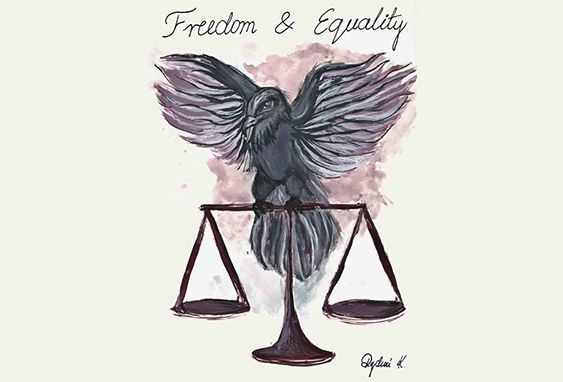human rights


I thought I would get down to my work seriously and, as a result, I ended up contemplating The Universal Declaration of Human Rights. This was when it occurred to me that we keep applying the following phrase – human rights – to such an extent in every possible realm of our lives that it may sound a bit cliché. Its core – the hidden meaning – is not, naturally. Or preferably, it should not be so.
Once we have addressed that matter, let me present you with some fun facts. The paper in question was passed by the United Nations General Assembly in Paris on 10 December 1948 and ever since has been widely recognised as a significant breakthrough in the history of the fight for… exactly, human rights. It comprises of as many as 30 articles in an attempt to cover all kinds of freedoms, which an individual should have guaranteed. These are the records that, put together, constitute the strong foundation of international law, which is… yet again, human rights.
No wonder the Assembly defined them as ‘inalienable’, one cannot get rid of that expression. Seriously though, the great number of interdependent epithets describing human rights underscores the fact that they are inherent to all of us – the status of ‘human being’ is a sufficient entitlement.
The document above guarantees decent working and living conditions, confirms freedom of movement and the right to asylum – all of it regardless of one’s skin colour, nationality, sex, religion and social status. Furthermore, to put it simply, one is considered innocent until their guilt is proven beyond any reasonable doubt. Neither is the law retroactive. Generally speaking, you must not be punished for something that was not forbidden at a time when you happened to do it. First and foremost though, your liberty is solely restricted by the rights of others. Thus, having reviewed that five-page document, let’s proceed to its roots.
The heyday of the idea of human rights dates back to the French Revolution. The establishment of The Declaration of the Rights of Man and of the Citizen (1789), edited by both Marquis de Lafayette and Thomas Jefferson (sounds familiar, doesn’t it?), was indicative of the changes unfolding in contemporaneous France. It was to ensure the famed trio: liberty, equality, fraternity and guarantee freedom of religion, speech, proprietorship and so on. You might not be impressed now, however, with hindsight, it was a significant event. Obviously, the resolutions themselves were not tantamount to their immediate implementation. Still, they boded well for the future. Moreover, the ‘equality thing’ was to embrace men only. Suffice it to say, poor Olympe de Gouges, who even managed to conceive a The Declaration of the Rights of Woman and the Female Citizen at the time, happened to get first-hand experience of how doctor Joseph Guillotin’s brainchild worked.
As you can see, we have come a long way towards the contemporary state of affairs. Despite the common acknowledgement of The Universal Declaration, there are still some places in the world where people are denied human rights. It does not take a rocket scientist to state so. No paper can eradicate such phenomena. What we can do instead, is to spread awareness. Surprisingly, quoting Macklemore seems like an appropriate thing to do in conclusion. No freedom till we are equal. And – frankly – I support it!
Grafika: Klaudia Rydzoń
Korekta: Natalie Menezes


